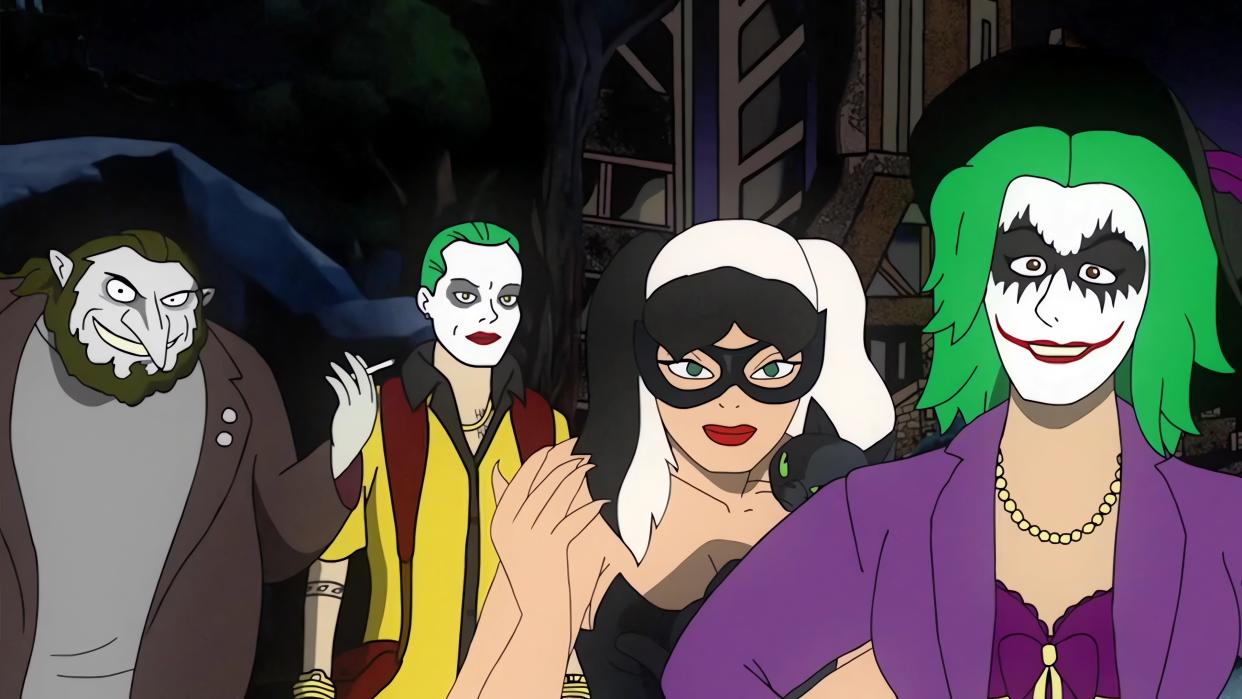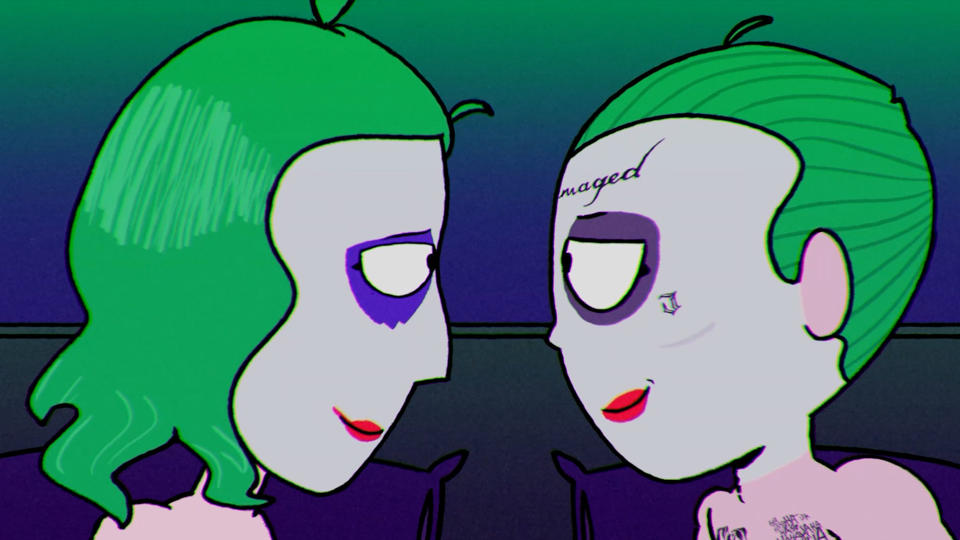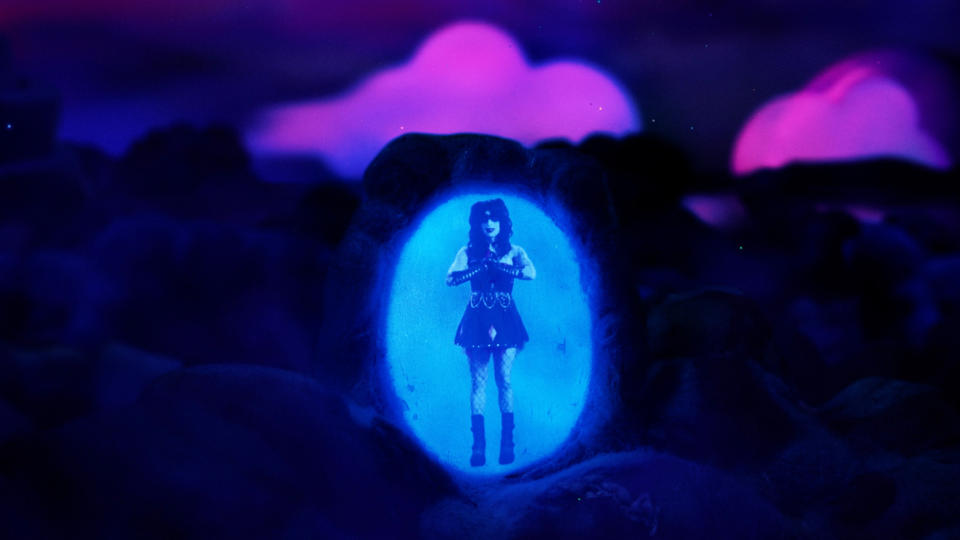‘The People’s Joker’ Features the People’s Animation

- Oops!Something went wrong.Please try again later.
Sometimes, a Bat Signal is a searchlight that sends a signal of hope capable of piercing even Gotham City’s darkest night. Sometimes, it’s a YouTube video on a channel devoted to getting sponsorship from Hot Topic, asking any artists if they’re down to collaborate. Vera Drew opted for the latter.
Her film, “The People’s Joker,” is not only one of the most impressive and subversive stretches of fair use law ever put to film, taking the characters and mythology of the Batman universe (as well as Lorne Michaels) to tell a trans coming-of-age story that DC Comics would never touch on its own. It is also an impressive, successful example of how crowdsourcing can elevate a project and bring out the radical queer politics at its heart.
More from IndieWire
Ruben Östlund Proposes Requiring Licenses to Use Cameras: 'You Need One for a Gun'
Robert Downey Jr. Likens His Role in 'Oppenheimer' to 'Picking Fly Sh*t Out of Pepper'
Drew had initially thought about working on a project that repurposed and rearranged footage from Todd Philip’s “Joker,” but then the script she and co-writer Bri Lerose wrote revealed itself to be something much more complex. It turned into the story of Joker the Harlequin (Vera Drew), a trans woman who moves to Gotham City to pursue comedy in a world where comedy is either state-sanctioned or illegal. After founding an illicit underground comedy club along with fellow UCB dropout The Penguin (Nathan Faustyn), Joker the Harlequin finds herself reckoning with her upbringing, an abusive relationship, and punching Batman in the face.
Most of the world of “The People’s Joker” is mixed media, blending live-action and psychedelic CG characters with full-on animation sequences, stop-motion, and wild atmospheric art. Every shot in the film is a VFX shot. It’s a world that Drew built much of herself but it wasn’t something that she could do alone. “I needed a little army of mostly queer artists to really help me tell it,” Drew told IndieWire. “And what was really cool, too, is I’d say the majority of the people that responded to that initial call really didn’t have any ambitions of working in TV or film. They were just visual artists.”
Bringing in folks from outside the film industry actually allowed “The People’s Joker” to embrace ideas that would’ve been self-censored or squashed in a traditional animation process. “Our broken down amusement park set — that was just a 2D psychedelic painting that A.T. Pratt, this artist that makes big, weird, psychedelic ‘Alice In Wonderland’ perspective paintings, did. And honestly, when I got that from him, I was like, ‘I didn’t think this through. I have no idea how I’m gonna use this,’” Drew said. “If I was a quote-unquote ‘auteur’ or whatever, I would have sent it back and been like, ‘No, this is not the perfect image in my head,’ but instead the mantra from the beginning with this movie really was ‘Yes, and.’”
Drew figured out how to use the psychedelic background and many other innovative flourishes that artists brought to “The People’s Joker.” It’s part of what creates the visual sense of the film being truly handmade by a multiplicity of queer perspectives, as opposed to processed by a shiny Hollywood machine. The shifts in animation style are part of what visually signal the multitudes Joker the Harlequin contains.
“I knew my hand was going to be all over this to an obnoxious degree — to a degree that I would feel uncomfortable just putting out there if I didn’t have all these other very clear, and often very queer differing perspectives,” Drew said. “The main deciding factor [for what artists worked on] was what is the visual aesthetic that they primarily work in.”

K Kypers, a New York City-based animator, had the additional challenge of queering the aesthetic of the classic ‘90s Bruce Timm Batman cartoons, which “The People’s Joker” uses for a climactic fight sequence. Kypers led the animation efforts, along with a team of talented friends and students, which had to be done and then redone with a Batman of a different size (for legal reasons). “The Bruce Timm aesthetic is really super gendered, where the men are always pretty big and broad-shouldered, and the women are very dainty, with tiny feet,” Kypers told IndieWire. “It was a task to try and show the trans characters in particular in a way that wasn’t cis-iffying them and yet still trying to make them read as Bruce Timm’s.”
Meanwhile, cartoonist Tucker Wooley reached out to Drew while he was still in his senior year of art school and ended up animating one of the emotional hinge points of “The People’s Joker.” Drew knew she wanted limited, kind of soft animation for that moment, and Wooley delivered a tender ‘zine look that cements what draws Joker the Harlequin and Mister J (Kane Distler) together. It represents, to Wooley, not just a scene he’s proud of but a way of working with a filmmaker that gets great results. “I think in the animation industry, especially in studio jobs, you’re kind of encouraged not to reach out. That’s seen as a faux pas or a look of desperation,” Wooley told IndieWire. “But it goes a long way to be earnestly interested in something and reaching out and sharing that with somebody. That is how connections are made.”
For some of the more tactile elements, Drew connected with New Orleans-based artist Noah Stijl. She recalls talking to Stijl about one sequence towards the end of the film in her car after a hike. “Nobody ever asks me this, so I want to make sure I add to the record that I did get into superhero shape for this role,” Drew said. “But I think the phrase I kept using was ‘She goes through like a cosmic car wash’ or something.”

Stijl ended up doing much more than a cosmic carwash. He handled key stop motion sequences, built not one but two Tower of Babel-esque structures, and the 3D environment from which Joker the Harlequin tells her story. For the stop-motion character of Scarecrow (Christian Calloway), Stijl constructed the doll version of the character out of Spanish moss and animation wire and then shot its movements on his bedroom floor. “I really fucked up that apartment. I definitely didn’t get my deposit back,” Stijl (who has thankfully since moved) told IndieWire.
Stijl’s work blends practical and environmental animation, something he brought to the “Purple World” and Hell sequences (Joker the Harlequin goes a lot of places in this movie). For the narrator’s space, Stijl set up a mirror with a clay frame that had wool over the sides of it. He then set up a projector in his shed and played clips of Drew narrating onto the mirror. “I recorded it on my little DSLR that I’ve had since middle school and somehow it turned out amazing,” Stijl said.
For all the artists, Drew approved storyboards and tweaked iterations but also gave her collaborators space to make the work their own, in their own way (if at the risk of their own security deposits). And somehow, it turned out amazing. Drew thinks that has a lot to do with finding good, inventive people to work with and then doing it in a humane way.
“I’m really grateful that I had like 10 years of TV experience before making this movie because I feel like I could have made a lot of huge, life-fucking-up mistakes,” Drew said. “It’s really easy to fall into these go traps of, like, ‘What the fuck are we doing? We’re behind schedule. There’s 1,600 shots in this movie that all need to be green screen replaced.’ So hopefully you surround yourself with people who have that grace… to be like, ‘Easy does it.’”
Best of IndieWire
The 22 Best Spy Movies, from 'Enemy of the State' to 'North by Northwest'
The 12 Best Thrillers Streaming on Netflix in April, from 'Fair Play' to 'Emily the Criminal'
Quentin Tarantino's Favorite Movies: 61 Films the Director Wants You to See
Sign up for Indiewire's Newsletter. For the latest news, follow us on Facebook, Twitter, and Instagram.

